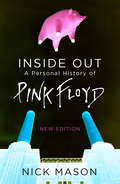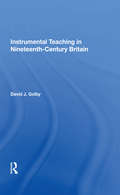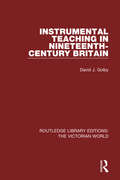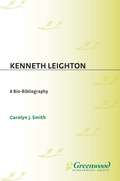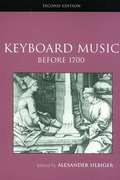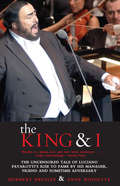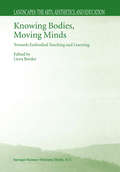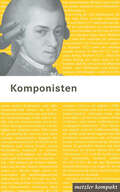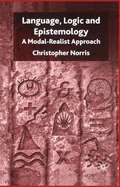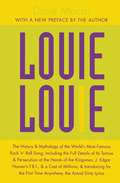- Table View
- List View
Hollywood Theory, Non-Hollywood Practice: Cinema Soundtracks in the 1980s and 1990s
by Annette DavisonRelatively little has been written about film scores and soundtracks outside of Hollywood cinema. Hollywood Theory, Non-Hollywood Practice addresses this gap by looking at the practices of film soundtrack composition for non-Hollywood films made after 1980. Annette Davison argues that since the mid-1970s the model of the classical Hollywood score has functioned as a form of dominant ideology in relation to which alternative scoring and soundtrack practices may assert themselves. The first part of the book explores some of the key theoretical issues and debates in film studies and film music studies. The second part comprises a series of case studies of non-Hollywood scores. Starting with Jean Luc Godard's Pr m: Carmen (1983), Davison argues that the film's score offers a deconstruction of the relationship between sound and image proposed by classical Hollywood film. Derek Jarman's The Garden (1990) takes the debate a step further in its exploration of the possibility that a film's soundtrack may be liberated from slavery to the image track. Wings of Desire (1987) directed by Wim Wenders offers, Davison believes, a negotiation between classical and alternative scoring and soundtrack practices; while David Lynch's Wild at Heart (1990) actually fully integrates scoring and soundtrack practices so that sounds and dialogue are used in musical ways. Seeking to stimulate debate about the aesthetics and interpretation of film scores and soundtracks in general, this book develops an important synthesis of film studies and musicology.
Homegrown Music: Discovering Bluegrass (Non-ser.)
by Stephanie P. LedginWith retail sales of the O Brother, Where Art Thou? soundtrack exceeding 6.5 million copies since its 2000 release, bluegrass music has re-entered the spotlight as a major American style, spawning huge successes with subsequent albums. Author Stephanie P. Ledgin has captured the rich history of this music in Homegrown Music, a lively, informative book that is perfect for newcomers and devoted fans, musicians, and non-musicians. Though recognized and embraced internationally, bluegrass is one of only two musical genres native to America and, like jazz, it boasts a colorful and lively history, one that is captured here in all its detail complete with candid interviews with such legends as Earl Scruggs, Ralph Stanley, and the Nitty Gritty Dirt Band. Covering such aspects of bluegrass as instrumentation, songs, the festival experience, and parking lot picking, Homegrown Music also offers candid interviews with many celebrated bluegrass figures. An extensive up-to-the-minute resource guide of print, audio-visual, and Internet materials rounds out the volume. Enthusiasts of all ages will find much to discover and much to enjoy.
How to Survive on Tour with a Rock Band: Lives Less Ordinary
by Stuart MaconieThe Lives Less Ordinary series brings you the most exciting, adventurous and entertaining true-life writing that is out there, for men who are time-poor but want the best. Lives Less Ordinary drops you into extreme first-hand accounts of human experience, whether that's the adrenaline-pumping heights of professional sport, the brutality of the modern battlefield, the casual violence of the criminal world, the mind-blowing frontiers of science, or the excesses of rock 'n' roll, high finance and Hollywood. Lives Less Ordinary also brings you some of the finest comic voices around, on every subject from toilet etiquette to Paul Gascoigne.Anyone who every dreams of being in the music business thinks that 'being with the band' is an instant passport to free drugs, women and hedonistic, rock 'n' roll good times. But Stuart Maconie hilariously tells a different story of the slow-drip hell of continental travel in the claustrophobic confines a small van with a certain death metal trio.This digital bite has been extracted from Stuart Maconie's brilliant book Cider with Roadies.
The Idea of Music in Victorian Fiction (Music in Nineteenth-Century Britain)
by Nicky LosseffThe Idea of Music in Victorian Fiction seeks to address fundamental questions about the function, meaning and understanding of music in nineteenth-century culture and society, as mediated through works of fiction. The eleven essays here, written by musicologists and literary scholars, range over a wide selection of works by both canonical writers such as Austen, Benson, Carlyle, Collins, Gaskell, Gissing, Eliot, Hardy, du Maurier and Wilde, and less-well-known figures such as Gertrude Hudson and Elizabeth Sara Sheppard. Each essay explores different strategies for interpreting the idea of music in the Victorian novel. Some focus on the degree to which scenes involving music illuminate what music meant to the writer and contemporary performers and listeners, and signify musical tastes of the time and the reception of particular composers. Other essays in the volume examine aspects of gender, race, sexuality and class that are illuminated by the deployment of music by the novelist. Together with its companion volume, The Figure of Music in Nineteenth-Century British Poetry edited by Phyllis Weliver (Ashgate, 2005), this collection suggests a new network of methodologies for the continuing cultural and social investigation of nineteenth-century music as reflected in that period's literary output.
The Idea of Music in Victorian Fiction (Music in Nineteenth-Century Britain)
by Nicky LosseffThe Idea of Music in Victorian Fiction seeks to address fundamental questions about the function, meaning and understanding of music in nineteenth-century culture and society, as mediated through works of fiction. The eleven essays here, written by musicologists and literary scholars, range over a wide selection of works by both canonical writers such as Austen, Benson, Carlyle, Collins, Gaskell, Gissing, Eliot, Hardy, du Maurier and Wilde, and less-well-known figures such as Gertrude Hudson and Elizabeth Sara Sheppard. Each essay explores different strategies for interpreting the idea of music in the Victorian novel. Some focus on the degree to which scenes involving music illuminate what music meant to the writer and contemporary performers and listeners, and signify musical tastes of the time and the reception of particular composers. Other essays in the volume examine aspects of gender, race, sexuality and class that are illuminated by the deployment of music by the novelist. Together with its companion volume, The Figure of Music in Nineteenth-Century British Poetry edited by Phyllis Weliver (Ashgate, 2005), this collection suggests a new network of methodologies for the continuing cultural and social investigation of nineteenth-century music as reflected in that period's literary output.
Improvisation: Methods and Techniques for Music Therapy Clinicians, Educators, and Students (PDF)
by Tony WigramImprovisation plays a key role in the toolbox of the music therapist. Tony Wigram's practical and comprehensive guide and online content will prove indispensable to students, teachers, therapists and musicians as a book of musical techniques and therapeutic methods. Beginning with an overview of developing, teaching and analysing the skills of improvisation, Wigram describes techniques ranging from warming up to mirroring, rhythmic grounding, containing and holding. With specific sections on piano improvisation, chordal and 2-, 3- and 4- note improvisation are covered, in addition to advanced skills such as frameworking and transitions. Wigram also includes techniques for thematic improvisation, group improvisation and outlines methods for analysing and reporting improvisational processes. Notated examples allow readers to try out techniques and progress as they read, with audio examples on the accompanying online content adding another dimension to the structure and guidance provided for all levels of music student and therapist.
Inside Out: A Personal History of Pink Floyd
by Nick MasonUPDATED FOR 2017 WITH A NEW CHAPTERThe definitive history of Pink Floyd, one of the world's great bands, by founder member Nick Mason.Pink Floyd is one of the most creative, successful and enduring bands of all time. As the only member to have been part of the band throughout the 50 years of its existence, and the first to write a personal take on their history, Nick Mason gives unique insights into Pink Floyd's highs and lows: from their emergence in the late 1960s underground, to the huge worldwide success of The Dark Side of the Moon and the rifts and pressures that developed within the group.In a new chapter Nick Mason looks back at the years following the band's final performance at Live 8 in July 2005 and reflects on the huge changes that have occurred since: the irreplaceable losses, the new releases and the impact on the Floyd's continued success of both digital technology and social media. Intelligent, original and self-deprecating, Inside Out is the first-hand story of a band that has become a legend, as celebrated by the Victoria & Albert Museum's landmark Pink Floyd exhibition in 2017.
Instrumental Teaching in Nineteenth-Century Britain
by David GolbyIt is a truth widely acknowledged that, while part of a uniquely diverse and vibrant musical environment, the achievements of home-grown British instrumentalists in the nineteenth century gave little cause for national pride. Drawing together information from a wide variety of primary and secondary sources, in particular treatises and tutors, David Golby demonstrates that while Britain produced many fewer instrumental virtuosi than its foreign neighbours, there developed a more serious and widespread interest in the cultivation of music throughout the nineteenth century. Taking a predominantly historical approach, the book moves from a discussion of general developments and issues to a detailed examination of violin pedagogy, method and content which is used as a guide to society's influence on cultural trends and informs the discussion of other instruments and institutional training that follows. In the first study of its kind Dr Golby examines in depth the inextricable links between trends in society, education and levels of achievement. He also extends his study beyond professional and 'art' music to incorporate the hugely significant amateur and 'popular' spheres. To provide a contextual framework for the study, the book includes a chronology of developments in 19th-century British music education, and a particularly useful feature for future researchers in this field is a representative chronology of principal British instrumental treatises 1780-1900 that features over 700 items.
Instrumental Teaching in Nineteenth-Century Britain (Routledge Library Editions: The Victorian World)
by David GolbyFirst published in 2004, this book demonstrates that while Britain produced many fewer instrumental virtuosi than its foreign neighbours, there developed a more serious and widespread interest in the cultivation of music throughout the nineteenth century. Taking a predominantly historical approach, the book moves from a discussion of general developments and issues to a detailed examination of violin pedagogy, method and content, which indicates society’s influence on cultural trends and informs the discussion of other instruments and institutional training that follows. In the first study of its kind, it examines in depth the inextricable links between trends in society, education and levels of achievement. It also extends beyond profession and ‘art’ music to amateur and ‘popular’ spheres. A useful chronology of developments in nineteenth-century British music education is also included. This book will be of interest to those studying the history of instrumental teaching and Victorian music.
Instrumental Teaching in Nineteenth-Century Britain (Routledge Library Editions: The Victorian World)
by David GolbyFirst published in 2004, this book demonstrates that while Britain produced many fewer instrumental virtuosi than its foreign neighbours, there developed a more serious and widespread interest in the cultivation of music throughout the nineteenth century. Taking a predominantly historical approach, the book moves from a discussion of general developments and issues to a detailed examination of violin pedagogy, method and content, which indicates society’s influence on cultural trends and informs the discussion of other instruments and institutional training that follows. In the first study of its kind, it examines in depth the inextricable links between trends in society, education and levels of achievement. It also extends beyond profession and ‘art’ music to amateur and ‘popular’ spheres. A useful chronology of developments in nineteenth-century British music education is also included. This book will be of interest to those studying the history of instrumental teaching and Victorian music.
Instrumental Teaching in Nineteenth-Century Britain (Music In Nineteenth-century Britain Ser.)
by David GolbyIt is a truth widely acknowledged that, while part of a uniquely diverse and vibrant musical environment, the achievements of home-grown British instrumentalists in the nineteenth century gave little cause for national pride. Drawing together information from a wide variety of primary and secondary sources, in particular treatises and tutors, David Golby demonstrates that while Britain produced many fewer instrumental virtuosi than its foreign neighbours, there developed a more serious and widespread interest in the cultivation of music throughout the nineteenth century. Taking a predominantly historical approach, the book moves from a discussion of general developments and issues to a detailed examination of violin pedagogy, method and content which is used as a guide to society's influence on cultural trends and informs the discussion of other instruments and institutional training that follows. In the first study of its kind Dr Golby examines in depth the inextricable links between trends in society, education and levels of achievement. He also extends his study beyond professional and 'art' music to incorporate the hugely significant amateur and 'popular' spheres. To provide a contextual framework for the study, the book includes a chronology of developments in 19th-century British music education, and a particularly useful feature for future researchers in this field is a representative chronology of principal British instrumental treatises 1780-1900 that features over 700 items.
Jazz And Its Discontents: A Francis Davis Reader (A\francis Davis Reader Ser.)
by Francis DavisFrom Frank Sinatra to Sun Ra, from the jazz age to middle age, with thoughts on everything in-between, Francis Davis has been writing about American music and American culture for more than twenty years. His essays have appeared in The Atlantic Monthly, The New Yorker, and the Village Voice among countless other publications from coast to coast. And now, for the first time, here are his most important writings of his impressive career-the quintessential Davis on everything from why Rent set musicals back two decades, to what Ken Burns should have filmed. And Davis's writing is as enjoyable as the music of which he writes. The New York Times Book Review has compared Davis's work to "a well-blown solo."
Jazz Journeys To Japan: The Heart Within (Jazz Perspectives Ser. (PDF))
by William MinorBy turns a music history, a cultural meditation, and a travel narrative, 'Jazz Journeys to Japan' looks at the work of individual players such as Toshiko Akiyoshi, Masahiko Satoh, Makoto Ozone and Yosuke Yamashita.
Kenneth Leighton: A Bio-Bibliography (Bio-Bibliographies in Music)
by Carolyn J. SmithKenneth Leighton, best known for his organ and sacred choral music, was a composer of great depth and talent who wrote a significant body of works. Many of those works were written for large orchestras and a significant number of pieces of chamber music were composed for a variety of instrument groupings, as well as for instrumental solos. Anyone interested in 20th-century music as well as British and Scottish Cathedral music will find a wealth of works listed with a description of each.Kenneth Leighton, best known for his organ and sacred choral music, was a composer of great depth and talent who wrote a significant body of works. Many of those works were written for large orchestras and a significant number of pieces of chamber music were composed for a variety of instrument groupings, as well as for instrumental solos. Anyone interested in 20th-century music as well as British and Scottish Cathedral music will find a wealth of works listed with a description of each.This volume begins with a brief biography of Leighton and is followed by an alphabetical listing of works and performances. Also included is a discography and a bibliography of articles, reviews, books, and dissertations. The last section is a chronological list of compositions. Smith helps us to realize that Kenneth Leighton was an extraordinary composer of 20th-century music with a varied body of works and also a virtuoso pianist of some note.
Keyboard Music Before 1700 (Studies In Musical Genres And Repertories)
by Alexander SilbigerKeyboard Music Before 1700 begins with an overview of the development of keyboard music in Europe. Then, individual chapters by noted authorities in the field cover the key composers and repertory before 1700 in England, France, Germany and the Netherlands, Italy, and Spain and Portugal. The book concludes with a chapter on performance practice, which addresses current issues in the interpretation and revival of this music.
Keyboard Music Before 1700
by Alexander SilbigerKeyboard Music Before 1700 begins with an overview of the development of keyboard music in Europe. Then, individual chapters by noted authorities in the field cover the key composers and repertory before 1700 in England, France, Germany and the Netherlands, Italy, and Spain and Portugal. The book concludes with a chapter on performance practice, which addresses current issues in the interpretation and revival of this music.
The King and I: The Uncensored Tale of Luciano Pavarotti's Rise to Fame by his Manager, Friend and Sometime Adversary
by Anne Midgette Herbert BreslinIn 1967, Luciano Pavarotti was an up-and-coming young tenor with a voice far more impressive than his stage technique or presence. So Decca, his record company, told him, 'Luciano, you're a real nice guy. So you need a real bastard to do your publicity.' Enter Herbert Breslin. The two of them hit it off and thus began a professional association and a friendship that lasted over 36 years.The King and I is the story of that relationship, during which Breslin guided what he calls, justifiably, 'the greatest career in classical music', moving Pavarotti out of the opera house and into the arms of the mass public. He and Pavarotti changed the landscape of opera and Breslin relates the story of their journey in a candid, witty fashion that is often hysterically frank and profane. His portrait of his friend and client is full of hilarious details that could only come from a true insider. The King and I is the ultimate backstage book about the greatest opera star of the past century - and the last word comes from none other than Luciano Pavarotti himself.
Knowing Bodies, Moving Minds: Towards Embodied Teaching and Learning (Landscapes: the Arts, Aesthetics, and Education #3)
by Liora BreslerThis book aims to define new theoretical, practical, and methodological directions in educational research centered on the role of the body in teaching and learning. Based on our phenomenological experience of the world, it draws on perspectives from arts-education and aesthetics, as well as curriculum theory, cultural anthropology and ethnomusicology. These are arenas with a rich untapped cache of experience and inquiry that can be applied to the notions of schooling, teaching and learning. The book provides examples of state-of-the-art, empirical research on the body in a variety of educational settings. Diverse art forms, curricular settings, educational levels, and cultural traditions are selected to demonstrate the complexity and richness of embodied knowledge as they are manifested through institutional structures, disciplines, and specific practices.
Komponisten: metzler kompakt
Da steckt Musik drin. Die Essays zu 58 großen Komponisten, vom Mittelalter bis zur Gegenwart, von Monteverdi über Bach, Haydn, Beethoven und Wagner bis Nono stellen das künstlerische Schaffen und die historische Bedeutung heraus. Ein Vademecum für Kenner wie für Musikliebhaber.
Language, Logic and Epistemology: A Modal-Realist Approach
by C. NorrisNorris presents a series of closely linked chapters on recent developments in epistemology, philosophy of language, cognitive science, literary theory, musicology and other related fields. While to this extent adopting an interdisciplinary approach, Norris also very forcefully challenges the view that the academic 'disciplines' as we know them are so many artificial constructs of recent date and with no further role than to prop up existing divisions of intellectual labour. He makes his case through some exceptionally acute revisionist readings of diverse thinkers such as Derrida, Paul de Man, Wittgenstein, Chomsky, Michael Dummett and John McDowell. In each instance Norris stresses the value of bringing various trans-disciplinary perspectives to bear while none-the-less maintaining adequate standards of area-specific relevance and method. Most importantly he asserts the central role of recent developments in cognitive science as pointing a way beyond certain otherwise intractable problems in philosophy of mind and language.
Les sources du plain-chant et de la musique médiévale
by Michel HugloThe origin and development of Western plainchant, and of the genres of liturgical book in which it is recorded, have occupied Michel Huglo throughout his long career, which has taken him to libraries in every corner of Europe and the United States. This volume, the first in a set of four to appear in the Variorum series, brings together analyses of manuscripts dating from the 9th to the 13th century, including Huglo's pathbreaking studies of the antiphoner of Compiègne, the first troper-prosers, and of alleluia lists as clues to place of origin. The consequences of the Treaty of Verdun (843) for the diffusion of the plainchant repertory, research in medieval musicology in the 20th century, the utility of codicology for musicological manuscript studies, and the critical edition of the Gregorian antiphoner are addressed in other studies included here. Les origines et le développement du plain-chant en Occident et l'étude des genres de livres liturgiques qui le contiennent ont occupé Michel Huglo durant sa longue carrière et l'ont conduit à visiter des bibliothèques partout en Europe et aux Etats-Unis. Ce volume, le premier d'une série de quatre dans la collection Variorum, comprend des analyses de manuscrits du neuvième au treizième siècle, notamment des études novatrices relançant les recherches sur l'antiphonaire de Compiègne, les premiers tropaires-prosaires et les listes d'alleluias comme moyen d'identification des manuscrits de chant. Les conséquences du traité de Verdun (843) pour la diffusion du répertoire de plain-chant, les recherches en musicologie médiévale au XXe siècle, l'application des méthodes de la codicologie à l'étude des manuscrits notés, et l'édition critique de l'Antiphonaire grégorien forment les sujets d'autres études réunies dans ce volume.
Les sources du plain-chant et de la musique médiévale
by Michel HugloThe origin and development of Western plainchant, and of the genres of liturgical book in which it is recorded, have occupied Michel Huglo throughout his long career, which has taken him to libraries in every corner of Europe and the United States. This volume, the first in a set of four to appear in the Variorum series, brings together analyses of manuscripts dating from the 9th to the 13th century, including Huglo's pathbreaking studies of the antiphoner of Compiègne, the first troper-prosers, and of alleluia lists as clues to place of origin. The consequences of the Treaty of Verdun (843) for the diffusion of the plainchant repertory, research in medieval musicology in the 20th century, the utility of codicology for musicological manuscript studies, and the critical edition of the Gregorian antiphoner are addressed in other studies included here. Les origines et le développement du plain-chant en Occident et l'étude des genres de livres liturgiques qui le contiennent ont occupé Michel Huglo durant sa longue carrière et l'ont conduit à visiter des bibliothèques partout en Europe et aux Etats-Unis. Ce volume, le premier d'une série de quatre dans la collection Variorum, comprend des analyses de manuscrits du neuvième au treizième siècle, notamment des études novatrices relançant les recherches sur l'antiphonaire de Compiègne, les premiers tropaires-prosaires et les listes d'alleluias comme moyen d'identification des manuscrits de chant. Les conséquences du traité de Verdun (843) pour la diffusion du répertoire de plain-chant, les recherches en musicologie médiévale au XXe siècle, l'application des méthodes de la codicologie à l'étude des manuscrits notés, et l'édition critique de l'Antiphonaire grégorien forment les sujets d'autres études réunies dans ce volume.
Letters from a Life Volume 3 (1946-1951): The Selected Letters of Benjamin Britten
by Benjamin BrittenThe third volume of the annotated selected letters of composer Benjamin Britten covers the years 1946-51, during which he wrote many of his best-known works, founded and developed the English Opera Group and the Aldeburgh Festival, and toured widely in Europe and the United States as a pianist and conductor.Correspondents include librettists Ronald Duncan (The Rape of Lucretia), Eric Crozier (Albert Herring, Saint Nicolas, The Little Sweep) and E. M. Forster (Billy Budd); conductor Ernest Ansermet and composer Lennox Berkeley; publishers Ralph Hawkes and Erwin Stein of Boosey & Hawkes; and the celebrated tenor Peter Pears, Britten's partner. Among friends in the United States are Christopher Isherwood, Elizabeth Mayer and Aaron Copland, and there is a significant meeting with Igor Stravinsky.This often startling and innovative period is vividly evoked by the comprehensive and scholarly annotations, which offer a wide range of detailed information fascinating for both the Britten specialist and the general reader.Donald Mitchell contributes a challenging introduction exploring the interaction of life and work in Britten's creativity, and an essay examining for the first time, through their correspondence, the complex relationship between the composer and the writer Edward Sackville-West.
Listening to Reason: Culture, Subjectivity, and Nineteenth-Century Music
by Michael P. SteinbergThis pathbreaking work reveals the pivotal role of music--musical works and musical culture--in debates about society, self, and culture that forged European modernity through the "long nineteenth century." Michael Steinberg argues that, from the late 1700s to the early 1900s, music not only reflected but also embodied modern subjectivity as it increasingly engaged and criticized old regimes of power, belief, and representation. His purview ranges from Mozart to Mahler, and from the sacred to the secular, including opera as well as symphonic and solo instrumental music. Defining subjectivity as the experience rather than the position of the "I," Steinberg argues that music's embodiment of subjectivity involved its apparent capacity to "listen" to itself, its past, its desires. Nineteenth-century music, in particular music from a north German Protestant sphere, inspired introspection in a way that the music and art of previous periods, notably the Catholic baroque with its emphasis on the visual, did not. The book analyzes musical subjectivity initially from Mozart through Mendelssohn, then seeks it, in its central chapter, in those aspects of Wagner that contradict his own ideological imperialism, before finally uncovering its survival in the post-Wagnerian recovery from musical and other ideologies. Engagingly written yet theoretically sophisticated, Listening to Reason represents a startlingly original corrective to cultural history's long-standing inhibition to engage with music while presenting a powerful alternative vision of the modern.Some images inside the book are unavailable due to digital copyright restrictions.
Louie Louie: The History and Mythology of the World's Most Famous Rock 'n Roll Song; Including the Full Details of Its Torture and Persecution at the Hands of the Kingsmen, J. Edgar Hoover's FBI, and a Cast of Millions; and Introducing for the First Time Anywhere, the
by Dave MarshA new edition of Dave Marsh's classic work on the three-chord song that rocked the world "A tale as compelling as any John Grisham thriller." -Rolling Stone "Dave Marsh's Louie Louie is part rant, part rock criticism and part cultural analysis, with a good dose of Ripley's Believe It or Not! thrown in." -The New York Times Book Review "Marsh keeps the story of one trashy song interesting by revealing how 'three chords and a cloud of dust' contains within it the history and future of rock 'n' roll." -Booklist "What you don't know about 'Louie Louie' probably won't hurt you. But everything you need to know is in Marsh's book, including the lyrics-the real ones and the ones people thought they heard. If there is a better measure of your pop-cultural IQ, I don't know where to find it." -USA Today Since his days as the original editor of Creem, Dave Marsh has been revered as one of rock's greatest critics. During the 70s he was record editor at Rolling Stone, and in 1983 he founded Rock & Roll Confidential. His other books include Glory Days: Bruce Springsteen in the 1980s (1987), and Before I Get Old: The Story of the Who (1983).





